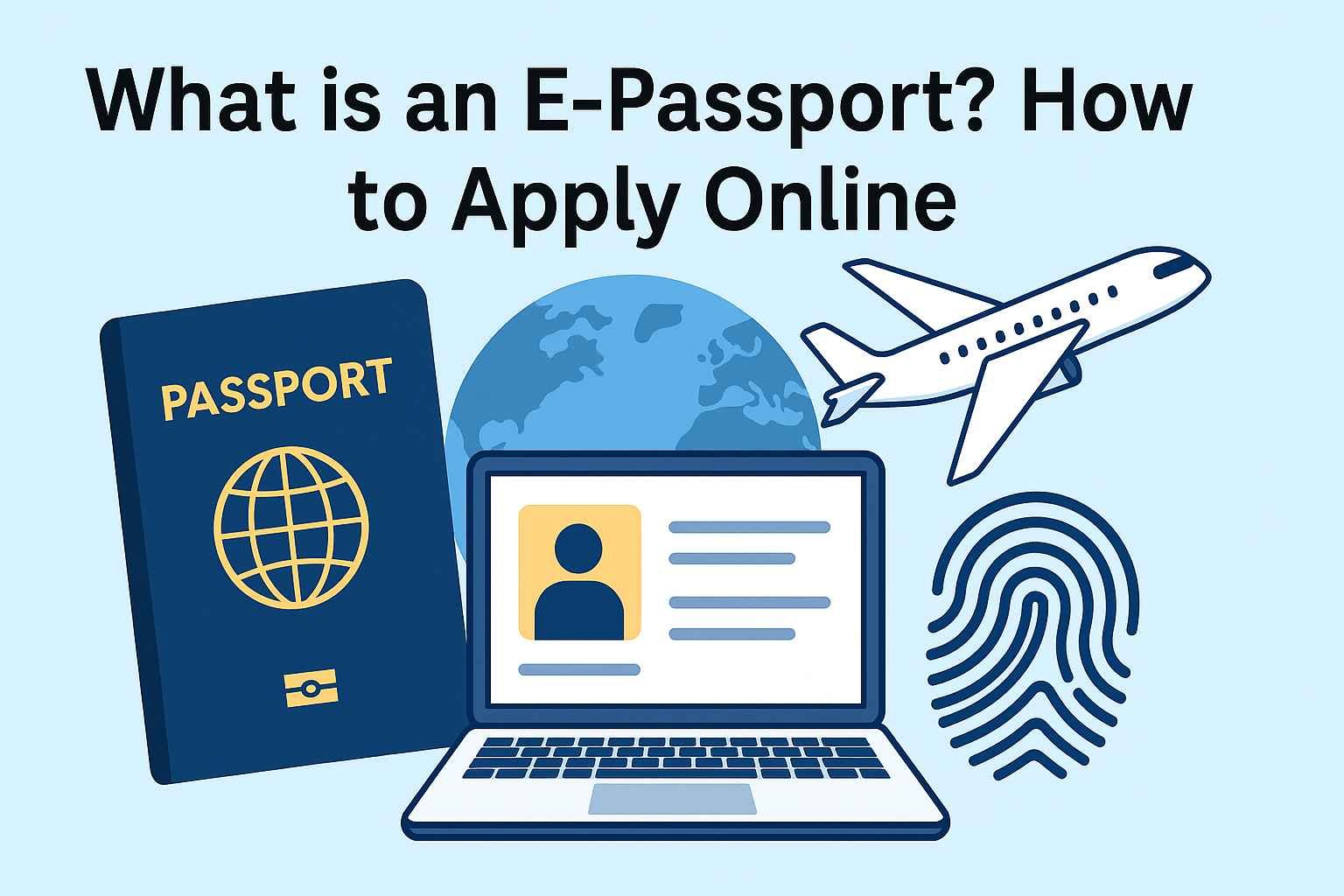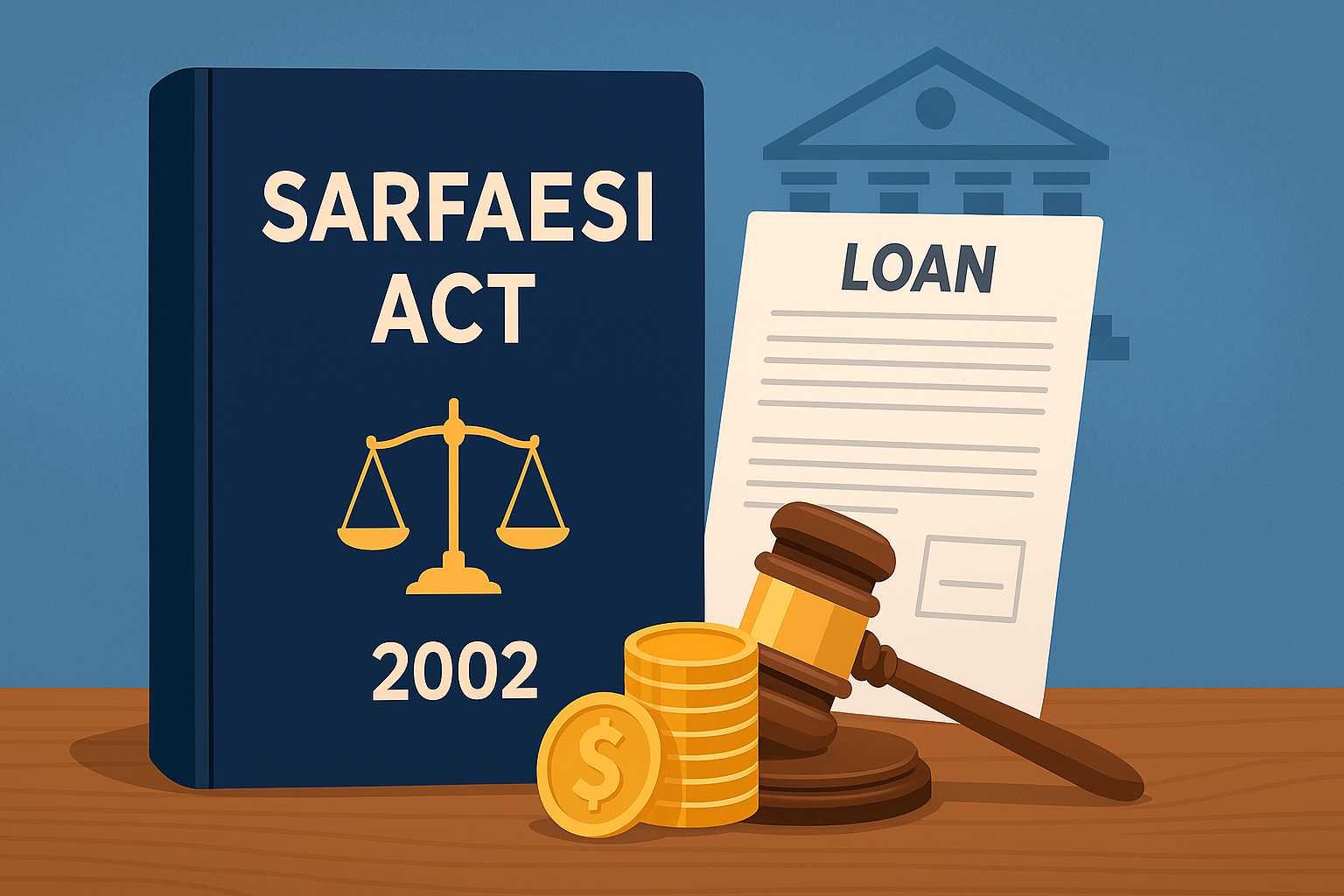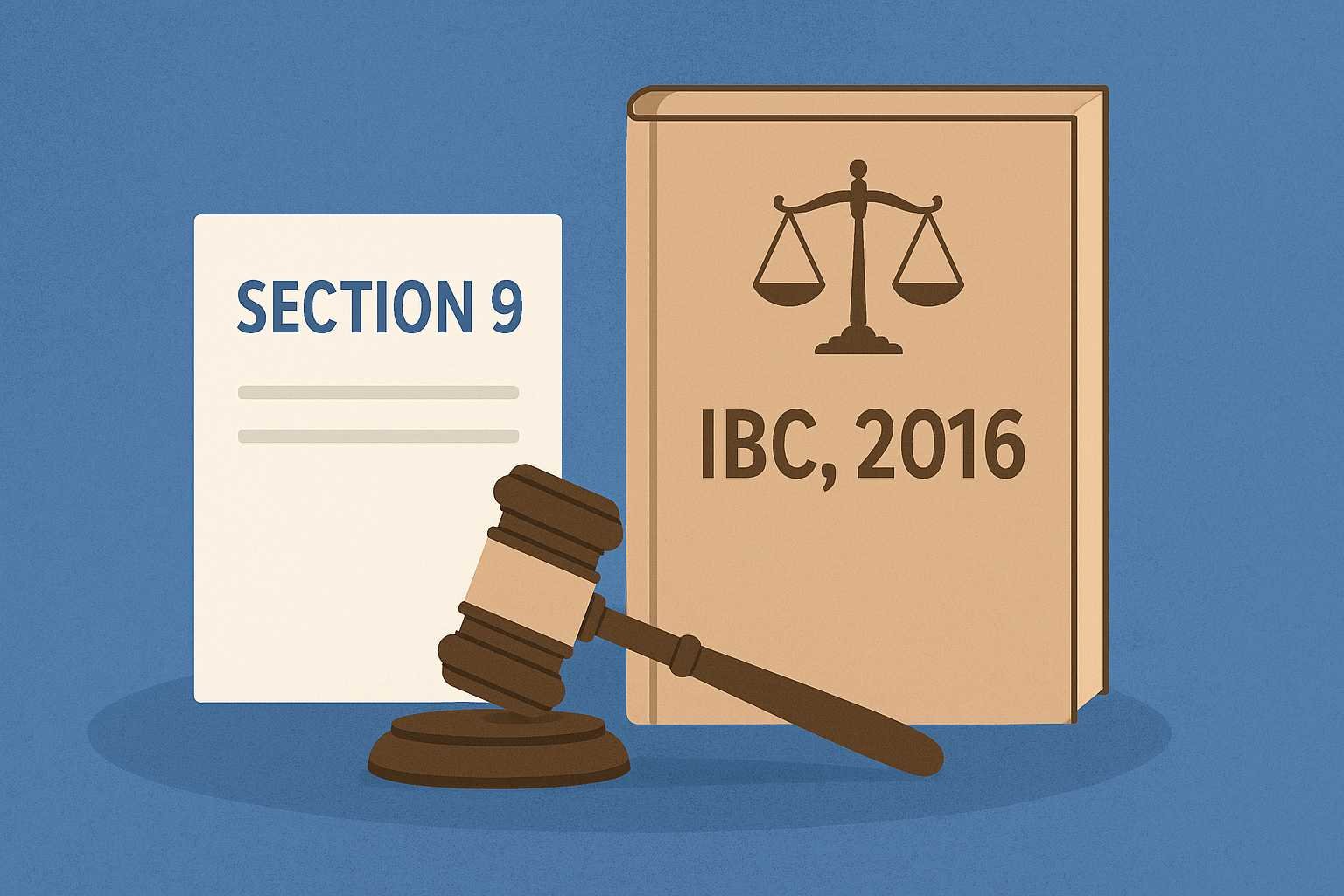On this page you will read detailed information about e-Passport in India.
An e-passport, also known as an electronic passport or biometric passport, is a modern version of the traditional passport that carries an embedded microprocessor chip containing biometric and identity data of the holder. The chip works in concert with the printed pages and machine-readable zone to enhance security, reduce forgery, and speed up processing at borders.
Key Components & How It Works
- Embedded Chip & Antenna:
A radio frequency identification (RFID) chip and antenna are integrated into the passport (often in the cover or data page). This chip stores data such as the holder’s name, date of birth, passport number, biometric data (facial photo, fingerprints, sometimes iris scan), and other relevant security info. - Printed Data & Machine-Readable Zone (MRZ):
The personal data is printed on the passport booklet (the data page) and also encoded in the MRZ (two lines of characters readable by optical scanners) to allow validation and cross-checks. - Security & Encryption:
- Passive Authentication (PA): The chip stores a digitally signed “data group hash” to detect tampering with stored data.
- Basic Access Control (BAC): The reader must first read the MRZ to derive a key before the chip will respond—prevents unauthorized scanning.
- Extended Access Control (EAC) / Chip Authentication / Terminal Authentication: In jurisdictions that support it, more advanced verification steps ensure only approved readers can access sensitive biometrics (fingerprints, iris) on the chip.
Because of these features, e-passports are considered much harder to forge or tamper with than conventional passports.
Benefits & Advantages
- Improved Security: Data is digitally signed and stored in the chip, making alteration or forgery extremely difficult.
- Faster Border Processing: Many airports use automated gates (e-gates) that can scan the chip and match biometrics without manual checks, speeding up immigration.
- Global Compatibility & Recognition: E-passports comply with standards set by ICAO (International Civil Aviation Organization), making them accepted worldwide where modern border control systems exist.
- Durability & Tamper-Resistance: Some countries adopt polycarbonate data pages and secure chip embedding to avoid wear and tear.
That said, e-passports also demand careful management of privacy, data security, and operational robustness (e.g. chip failures, compatibility issues).
E-Passport in India: The 2025 Rollout
Since e-passports are a relatively new development in India, it’s useful to look at how things are unfolding there as an example of a modern rollout. (If you are in another country, skip ahead to the general “How to Apply Online” section.)
Timeline & Launch
- The Indian government has initiated Passport Seva Programme (PSP) 2.0, which includes issuing chip-based e-passports in a phased manner.
- In 2025, several Regional Passport Offices (RPOs) began issuing e-passports under pilot or early rollout modes, including in cities like Nagpur, Bhubaneswar, Goa, Shimla, Amritsar, Jaipur, Chennai, Hyderabad, Surat, Ranchi, Delhi, etc.
- Over time, the plan is to expand to cover all passport offices across India.
Distinguishing Features
- The Indian e-passport bears a small gold symbol on the front cover indicating its chip status.
- The chip stores biometric details, demographic data, and a digitally signed version of the data for secure authentication at borders.
- Under PSP 2.0, the application and verification infrastructure are being modernized for greater transparency and digital resilience.
Validity & Transition
- You don’t need to replace a currently valid passport just because e-passports are being rolled out. Existing passports remain valid until their expiry.
- But when you apply for a new or reissued passport, you may automatically receive the e-passport if your RPO is issuing them.
How to Apply for an E-Passport Online (General Steps)
The application process for an e-passport is quite similar to that of a regular passport—most of the online portions remain, but there are extra biometric data capture steps. Below is a generalized, up-to-date guide (with a focus on India, where relevant).
Step 1: Check Availability in Your Area
Before applying, confirm whether e-passport issuance is available in your city or region. Some offices might still be issuing only traditional passports in early rollout phases.
- In India, check whether your RPO/PSK (Passport Seva Kendra) is among the cities issuing e-passports under PSP 2.0.
- If not available locally, you might need to apply at a nearby office that supports it.
Step 2: Register / Login to Passport Portal
- Go to your country’s official passport service portal. In India, that’s the Passport Seva website (services1.passportindia.gov.in).
- If you don’t have an account, register with your email, mobile number, and identity proof; existing users can just login.
Step 3: Fill the Passport / E-Passport Application Form
- Select “Apply for Fresh Passport” or “Re-issue / Renewal.”
- Fill in required personal information (name, date of birth, address, previous passport details if any).
- Most of the paperwork details (document certificates) are noted in the portal; you may or may not need to upload scanned copies depending on local rules.
Step 4: Choose Service Center & Appointment
- Select a Passport Seva Kendra (PSK) or Post Office Passport Seva Kendra (POPSK) where you will visit for in-person verification and biometric capture.
- Choose an appointment date/time slot when convenient.
Step 5: Pay Fees Online
- The system will require you to pay the relevant passport fees (normal or expedited / Tatkaal). Payment methods typically include credit/debit card, net banking, UPI, etc.
- Make sure payment is successful; you’ll get an Appointment Reference Number (ARN) or confirmation.
Step 6: Visit the PSK / Verification Center
On your scheduled date:
- Bring all original documents and self-attested photocopies (identity proof, address proof, birth certificate, old passport if applicable).
- The staff will verify documents, capture your photograph, and record biometric data (fingerprints, possibly iris, face scan) depending on your jurisdiction.
- After verification, you’ll get an acknowledgment slip or delivery/dispatch information.
Step 7: Wait & Track Status
- The passport (with chip) is then processed through secure production, validation, embedding the chip, printing, and dispatch.
- You can check the application status online using ARN and date of birth (or reference number).
- Once ready, you’ll receive your new e-passport via mail or you may need to pick it up at the PSK, depending on the system.
Country Examples / Variations
India
- The e-passport issuance is being phased in by RPOs across India under PSP 2.0.
- Application steps mirror the standard Passport Seva process, but eligible applicants in supported cities will get the chip version automatically.
- Processing times vary: regular applications typically take 7–10 days, while expedited (Tatkaal) service may deliver in 1–3 days.
Bangladesha
- Bangladesh has had an online e-passport registration and issuance portal.
- The steps include checking area availability, filling online form, paying the fee, and in-person biometric enrollment.
Other countries adopt similar systems, but the names of the portals, fees, and biometrics captured may vary.
What You Need to Know / Tips & Precautions
- Check RPO/Office Availability: If your local office isn’t issuing e-passports yet, you may still apply but receive a conventional one, or have to visit a compatible center.
- Documents Must Be Clean & Genuine: Mismatches or poor document scans can delay your application.
- Timeliness is Key: Arrive at your appointment on time with all documents – any delay can push your slot or require rebooking.
- Chip Malfunction Risks: Though rare, chip failures can happen. Systems usually allow fallback to manual verification, but monitor for any errors after issuance.
- Don’t Replace Valid Passports Prematurely: Unless your passport is expiring, you generally don’t need to replace it just because e-passports are rolling out.
- Privacy & Data Protection: Your biometric and personal data are stored securely with encryption. The chip and protocols (BAC, EAC) are designed to prevent unauthorized access.
- Passport Validity & Renewal: When it’s time to renew or reissue, opt for the e-passport version if your area supports it.
In the previous post, we had shared information about H-1B Visa: What’s Changing Now & What You Need to Know, so read that post also.
Sample Workflow: Applying an E-Passport in India (2025)
Here’s how an Indian applicant might experience the process in mid-2025:
- Pre-check: The applicant visits the Passport Seva site and checks that their city (say Jaipur) is offering e-passports under the new rollout.
- Registration & Application: They register or log in, fill the passport form (fresh or reissue), and submit the data.
- Service Center & Appointment: The user selects a local PSK or POPSK (e.g. Jaipur PSK) and picks a convenient appointment slot.
- Fee Payment: They pay the passport fee (standard or Tatkaal) through net banking or card.
- Visit for Biometric: On the appointment day, they bring identity documents (Aadhaar, PAN, old passport if any, proof of address) and go through document check, photo capture, fingerprint scan.
- Processing & Dispatch: The government’s secure facility embeds the chip, prints and signs the passport, packages it, and dispatches it (or arranges pickup).
- Receive & Use: The applicant gets the e-passport and can use it at e-gates or automated immigration checks abroad, where available.
Processing is relatively fast—typically under two weeks for standard cases, sometimes quicker in Tatkaal mode.
Future Trends & Considerations
- Wider Rollout: Countries are expanding e-passport issuance to all service centers. India aims for full adoption over time.
- Polycarbonate Data Pages: Increased use of polycarbonate pages (which are laser-engraved) that resist tampering and wear better than laminated sheets.
- Digital / Mobile Passports: Some nations are experimenting with fully digital travel credentials (e.g. mobile passports) that work from smartphones. Finland and others have pilots.
- Integration with Border Tech: E-gates, face recognition, iris scans, and integrated automated border control systems will rely heavily on e-passport chips.
- International Standards & Upgrades: As security threats evolve, passports may adopt stronger encryption, multi-factor authentication, or even standards like post-quantum cryptography in future.
Conclusion
An e-passport is not just a fancy upgrade—it’s a structural improvement in how identity and travel security are managed. It combines traditional printed passports with digital, biometric, and cryptographic safeguards. As more countries (including India) adopt e-passports, you’ll benefit from faster crossings, stronger protection against fraud, and enhanced compatibility with future border technologies.
To apply online, make sure your region is issuing them, register on the official portal, fill the form, pay fees, schedule a biometric appointment, and attend it with all documents. Track your application status, receive your document, and enjoy the convenience and security that comes with chip-based travel.
If you tell me which country you are in (India, US, Bangladesh, etc.), I can send you a country-specific version with exact portal links, forms, fees, and steps. Do you want me to do that for your country?
Disclaimer
The information and services on this website are not intended to and shall not be used as legal advice. You should consult a Legal Professional for any legal or solicited advice. While we have good faith and our own independent research to every information listed on the website and do our best to ensure that the data provided is accurate. However, we do not guarantee the information provided is accurate and make no representation or warranty of any kind, express or implied, regarding the accuracy, adequacy, validity, reliability, availability, or completeness of any information on the Site. UNDER NO CIRCUMSTANCES SHALL WE HAVE ANY LIABILITY TO YOU FOR ANY LOSS OR DAMAGE OF ANY KIND INCURRED AS A RESULT OR RELIANCE ON ANY INFORMATION PROVIDED ON THE SITE. YOUR USE OF THE SITE AND YOUR RELIANCE ON ANY INFORMATION ON THE SITE IS SOLELY AT YOUR OWN RISK. Comments on this website are the sole responsibility of their writers so the accuracy, completeness, veracity, honesty, factuality and politeness of comments are not guaranteed.
So friends, today we talked about e-Passport in India, hope you liked our post.
If you liked the information about e-Passport in India, then definitely share this article with your friends.
Knowing about laws can make you feel super smart ! If you find value in the content you may consider joining our not for profit Legal Community ! You can ask unlimited questions on WhatsApp and get answers. You can DM or send your name & number to 8208309918 on WhatsApp








